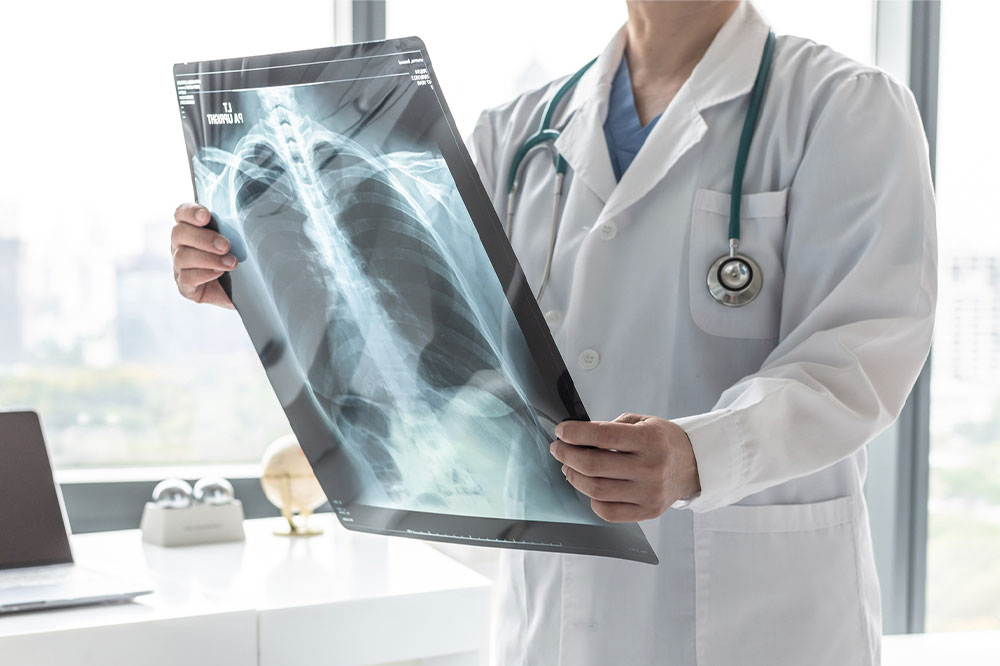
Acute respiratory distress syndrome – Symptoms and management
Acute respiratory distress syndrome (ARDS) is a health condition that can occur when fluid builds up in the air sacs of the lungs, making breathing difficult. It can happen suddenly and without warning, making it even more dangerous. People of all ages are at risk of developing ARDS; therefore, it is important to be aware of the warning signs of ARDS, what causes it, and treatments to manage the condition.
Symptoms
Acute respiratory distress syndrome can lead to breathing difficulties and other complications; therefore, one must understand the signs and symptoms of ARDS to seek a healthcare professional’s assistance if required. Some common warning signs of ARDS include-
- Rapid and shallow breathing
- Severe shortness of breath
- Increased heart rate
- Confusion
- Low blood oxygen levels
- Chest pain
- Excess fluid in the lungs
- Bluish tint appearance of the skin, especially around the lips and fingernails
Causes
Various factors, including infections, trauma, and other health conditions, can cause ARDS. Therefore, understanding the underlying cause is important so you can take measures to reduce your risks.
- Infections- Bacterial infections such as pneumonia are among the most common causes of ARDS. Viral infections like the flu can also trigger this condition.
- Trauma- Physical injuries like broken ribs or head injuries can lead to lung damage, which may result in ARDS.
- Blood transfusions- Certain types of blood transfusions have been associated with a heightened risk of developing this syndrome.
- Burns- Severe burns increase the likelihood of developing this condition due to inflammation and tissue damage.
- Near drowning incidents- Immersion in water increases pressure on the chest cavity, resulting in decreased airflow and potentially leading to severe breathing issues.
It’s also possible for people who don’t fall into any of the high-risk categories listed above to still develop acute respiratory distress syndrome without warning. If one experiences sudden breathing troubles or shortness of breath, seek a health expert’s attention, as these could be signs of a severe condition that must be treated immediately.
Diagnosis
The diagnosis of ARDS is based on a combination of clinical trials and physical exams. A healthcare professional usually performs a series of tests to confirm the diagnosis. These include a sampling of secretions, an echocardiogram, a blood test, a chest X-ray, and a CT scan.
- Sampling of secretions- Sampling of secretions can help identify the cause of ARDS. It involves collecting samples from the airways and testing them for viruses, bacteria, and other microorganisms that may be present in the lungs.
- Echocardiogram- This imaging technique employs sound waves to generate pictures of the heart and its valves. It can help diagnose ARDS by evaluating heart function.
- Blood test- It helps assess oxygen levels in the blood. A blood sample is taken from the artery and sent for testing. Low oxygen levels can indicate the presence of ARDS.
- Chest X-ray- A chest X-ray is an imaging test that can help diagnose ARDS by measuring fluid accumulation in the lungs. However, findings can vary depending on the severity of the disease.
- CT Scan- A CT scan is another imaging technique to detect lung abnormalities. It can also help identify any signs of infection or lung scarring.
Treatment
Since ARDS is a severe and life-threatening condition, this can lead to organ failure if not treated quickly. Fortunately, there are treatments available for ARDS that can help improve symptoms and reduce complications. The main goals of treatment include providing adequate oxygen levels, reducing inflammation in the lungs, and supporting other organs affected by ARDS. Health experts usually suggest the treatments listed below to manage ARDS symptoms.
- Oxygen therapy- The primary treatment for ARDS is oxygen therapy through a ventilator or mask. It helps provide the patient with sufficient oxygen required for body function.
- Mechanical ventilation- This involves providing extra oxygen, helping control the patient’s breathing rate, and removing carbon dioxide from the patient’s lungs.
- Prescription remedies- Healthcare professionals may prescribe various treatments to fight infections, reduce fluid buildup, and reduce inflammation.
Although acute respiratory distress syndrome can be life-threatening, watching out for the warning signs and consulting a doctor when needed can help decrease the severity of the condition. Understanding the risk factors associated with ARDS and recognizing any symptoms that necessitate a health expert’s intervention is important.




